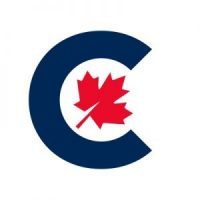Meet Erin O’Toole, the new leader of the federal Conservative Party
O’Toole has tended to be a moderate voice in the party.
His voting record shows him as socially progressive and in line with mainstream conservatism on other issues

The 2020 leadership was different in almost every way. It was short, lasting seven months. It was interrupted by a global pandemic that made in-person campaigning basically impossible and delayed the voting by two months. And it had a much smaller field, with just four candidates on the final ballot.
But O’Toole still took lessons from the 2017 race. Above all, his 2020 campaign — which featured many of the same people who worked on his previous one — was focused on courting the vote from across the spectrum of the party’s membership, including social conservatives. O’Toole wanted to ensure that if he wasn’t a voter’s first choice, he would be their second or third. This was key to Scheer’s victory in 2017.
But in this leadership race, O’Toole declared himself the “True Blue” candidate, an attempt to appeal to the grassroots, more right-wing Conservative party base — and in contrast with Peter MacKay, who O’Toole’s campaign frequently described as a “Red Tory” and “Liberal lite.” O’Toole launched his campaign in Calgary, a deliberate attempt to attract Western Canada support.
O’Toole also clearly targeted the social conservative vote, an influential voting bloc in leadership races. He made it clear that he would always allow a free vote on matters of conscience such as abortion, including for his cabinet ministers. However, O’Toole was upfront in saying he’s still personally pro-choice and supports same-sex marriage.
“We need a principled leader who will unite our party by respecting all conservatives,” O’Toole said during the leadership debate. “A leader who can show more urban and suburban Canadians that their values of liberty, family and equality are at the core of our party. That’s what I’ve done to win my suburban Toronto seat three times.”
O’Toole is married to Rebecca O’Toole, and they have two children, Mollie and Jack.
Full National Post Story HERE



